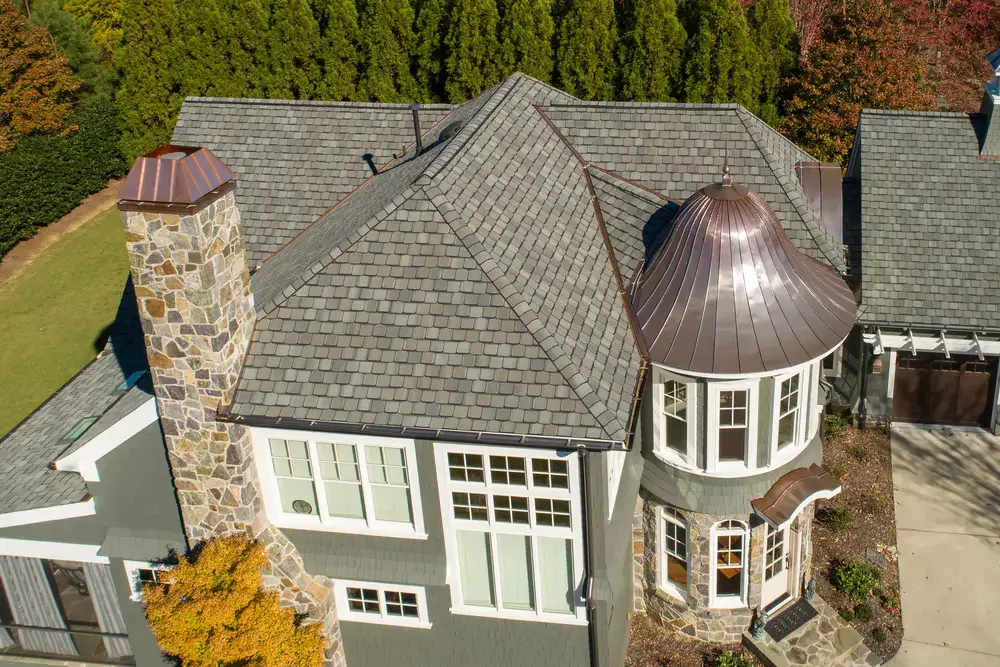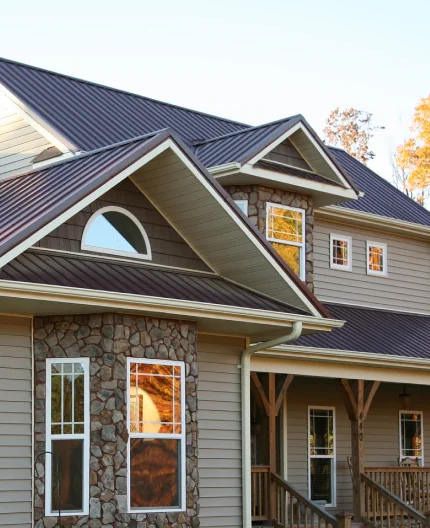Types of Roof Damage
Roof damage can become a serious issue very quickly if ignored. Your roof protects everything inside your home, including your family and valuable possessions. It also acts as an extra layer of insulation, preventing excess heat and/or AC from escaping through the attic.
Certain types of roof damage can also lead to other parts of your home deteriorating. For example, a long-standing roof leak can ruin drywall, create mold, and even cause structural damage to your home. This is why it’s crucial to recognize the signs of roof damage so you can be sure to take action when needed and keep your home in the best shape possible.
To help you take better care of your home, we’ve laid out some of the most common types of roof damage for you to explore below.

What is Considered Roof Damage?
Roof damage is a little bit different from the normal wear and tear you see on the roof of a home as houses age normally. Throughout the maturing process of your home, it’s normal to see some changes and aging due to external factors like seasonal weather.
Types of Seasonal Roof Damage
It’s normal to see aging signs like faded colors, dark stains, uneven shingles, or even a higher energy cost as your roof ages. These things aren’t considered roof damage, but they can lead to damage if you don’t have a good roof maintenance plan in place.
How to Recognize Types of Roof Damage
You can do a few things to stay on top of your roof maintenance and recognize roof damage. Being aware of the outdoor weather, paying attention to your roof, and familiarizing yourself with the signs of roof damage are all good places to start.
The frequency and intensity of storms in your area play a considerable toll on how much damage your roof is subject to throughout the year. It’s a good idea to get into the habit of walking around your home after a storm to check for any damages.
The Most Common Types of Roof Damage
General Signs of Roof Damage
- Missing, loose, or damaged shingles
- Shingles with curled edges
- Sagging areas of the roof
- Signs of water damage
- Water leaking
- Holes
Moisture Damage
If you notice stained ceilings or walls, your roof may have damage from moisture. Moisture damage can sometimes occur well before these stains show up, which is why it’s important to be vigilant when there’s an excess of wet weather.
Moisture damage can be significant once the water infiltrates under your shingles. It can cause mold, decay, rot, etc. and make your home susceptible to pests.
When Does Roof Damage Require Replacement?
When you catch roof damage early on and if the damage isn’t too widespread, it should be salvageable — especially if your roof isn’t very old. That being said, some types of roof damage can be impactful enough that you need a full roof replacement.
Broken or Damaged Flashing
Roof flashing is a thin layer of metal sheeting used to keep water from penetrating seams and joints. When the roof flashing fails to rebuff water properly, you may see water damage on siding. If the flashing is rusted or damaged in anyway, it will need to be replaced.
Cracked Roof Tiles
Usually, cracked roof tiles are caused by severe storms. However, sometimes roof damage from a storm can be exacerbated by a poorly-installed/poorly-maintained roof. If you notice a crack in your roof, it’s best to call in a professional to fix it. This is the type of roof damage that is most likely to result in needing a roof replacement.
Any of the signs of damage mentioned previously can be a significant warning that your roof needs professional attention. If you notice any of the above types of roof damage become chronic, it may be time for a replacement.
How Can Long Roofing Help?
When you spot roof damage on your home, it’s important to respond right away. Reacting to damages on your roof quickly can help you avoid more serious problems from occurring inside your home. If you’ve experienced a severe type of roof damage, contact the experts at Long Roofing to discuss your roof replacement options.



